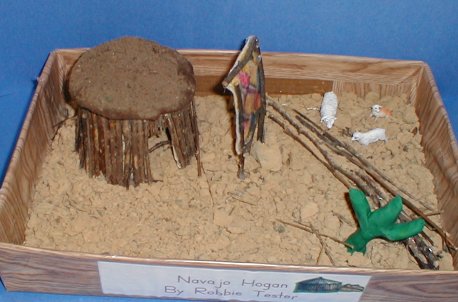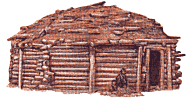Navajo
The Navajo, also known as Diné, are a Native American tribe known for their rich culture and strong connection to their land. They have their own language, traditions, and way of life. The Navajo are skilled weavers who create beautiful rugs, blankets, and silver jewelry. They believe in many spirits and hold important ceremonies to honor them. Despite facing many challenges, including forced relocations, the Navajo have preserved their culture and continue to share their traditions today.
Location and Environment
The Navajo lived in what is now northwestern New Mexico and northeastern Arizona. This land contained peaks, grasslands, deserts, and canyons. The Navajo were a nomadic group until they came into contact with the Pueblo. They adopted some of the Pueblo’s beliefs and customs, including farming, making pottery, and weaving.
Housing and Shelter
The Navajo lived in homes called hogans. Hogans were round houses built with forked sticks. The sticks were covered with brush, packed earth, hides, and whatever was available. The front door of the hogan always faced east to catch the first light of the morning sun. Later, the Navajo built a six-sided hogan of logs and mud. The hogan always had only one room.
Some had tables, chairs, beds, and wood-burning stoves. Outside the home, a weaving loom was set up. It was brought indoors only in the winter. A corral for the herd of sheep was close by the hogan. Homes were far apart. The Navajo blessed their homes in a special ceremony to bring them good luck and happiness.




Clothing and Adornments
The Navajo made their clothing from deerskin. The men wore breechcloths and leggings. The women wore deerskin dresses. Both wore moccasins. After the 1800s, the Navajo men borrowed the Mexican style and wore blankets draped over one shoulder. Their pants ended halfway between their knees and ankles. They decorated the seams of their pants with silver buttons. The women also borrowed the Mexican style of dressing. The women wore woolen dresses with two blankets stitched together at their shoulders. The women carried their babies in cradleboards, sometimes strapped to their backs. Later, the women traded for calico and made big, full skirts.
The following information was sent to us from Bernadette M. Wright, Phoenix, AZ:
Traditional women would wear a traditional dress made of cotton, with three to four tears in the skirt. Her shirt is typically made of velvet or crushed velvet adorned with coin buttons. She will also wear two types of traditional belts, either simultaneously or one at a time. That decision is usually made based on the type of event or reason for dressing traditionally. The first belt is a woven belt called a “sash belt,” and the second is a leather belt worn on top of the sash, called a concho belt. The women have no headdresses but a Navajo bun positioned on the back.
A traditional man would wear cotton pants, a concho belt, and a velvet or crushed velvet shirt. A man and wife will usually wear matching outfits. The only traditional headdress worn is worn by a man. Aside from the Navajo bun, positioned in the back of the head, a scarf would be folded to make a long, thin (belt-looking) scarf. This would be tied above one ear.